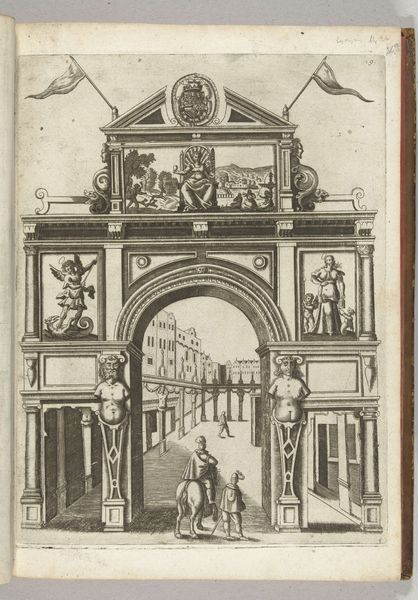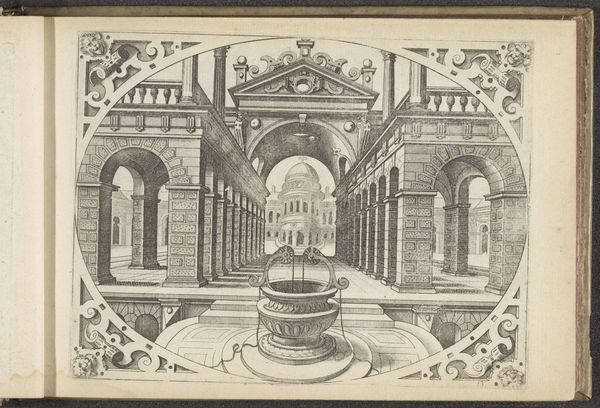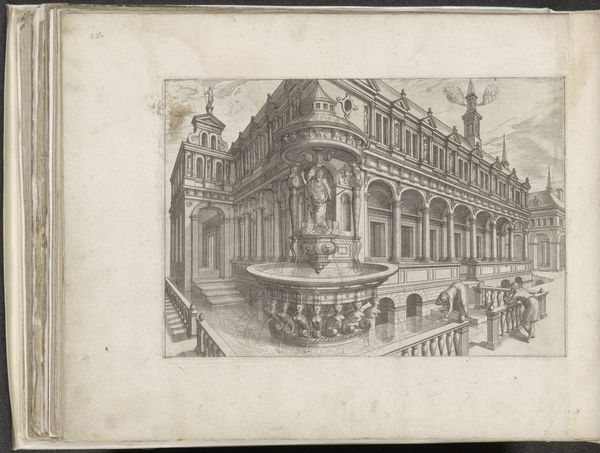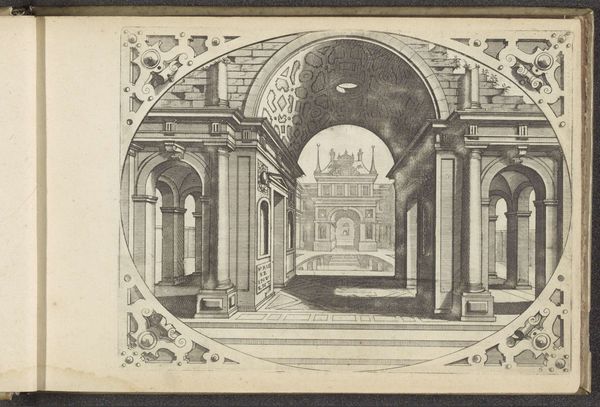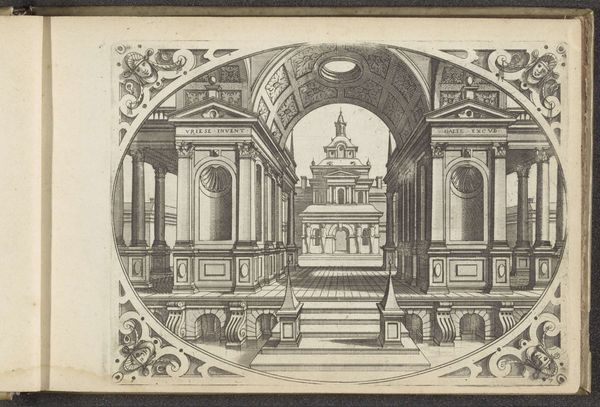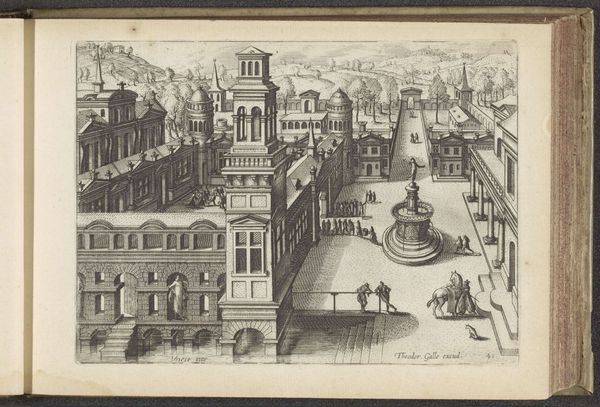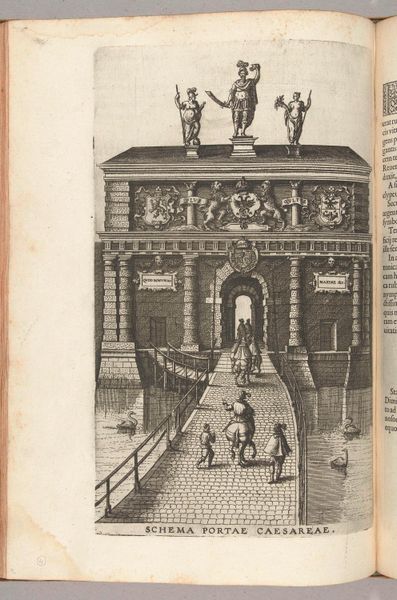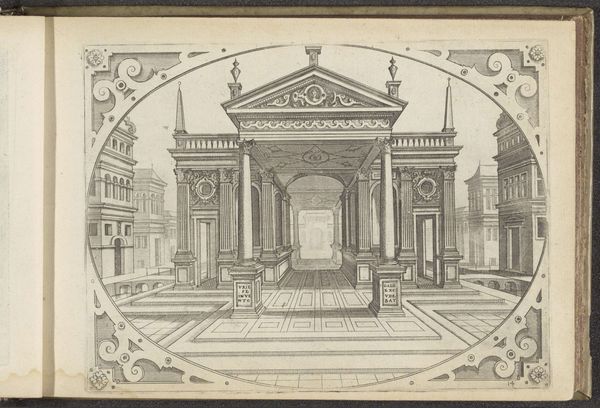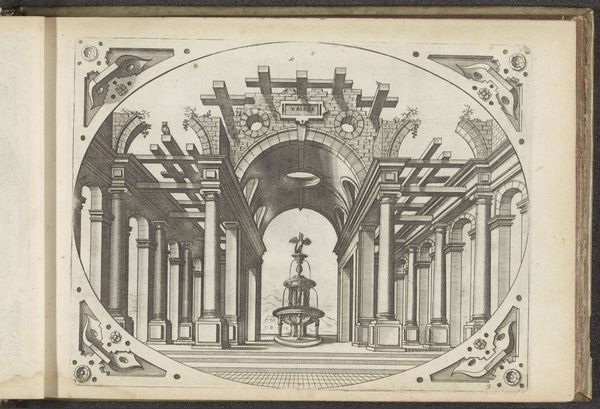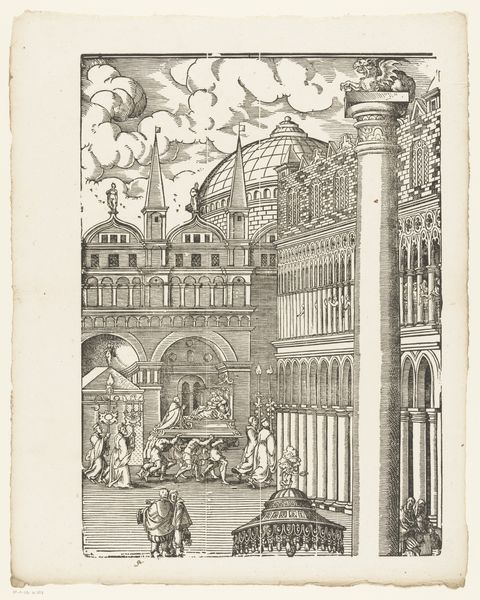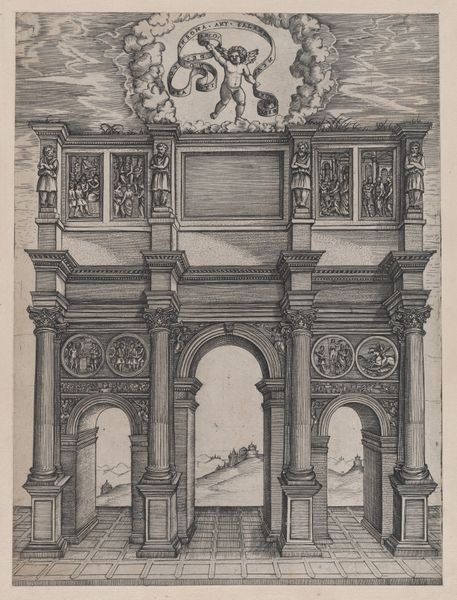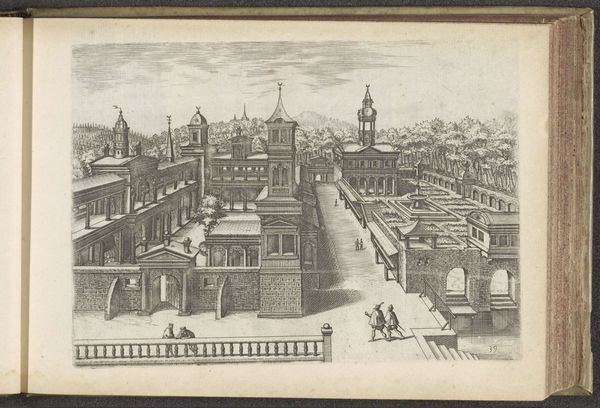
Gezicht op een kanaal met bruggen in vogelvluchtperspectief 1560 - 1601
0:00
0:00
johannesoflucasvandoetechum
Rijksmuseum
drawing, print, etching, ink, engraving
#
drawing
#
pen drawing
# print
#
etching
#
perspective
#
form
#
11_renaissance
#
ink
#
geometric
#
line
#
cityscape
#
engraving
Dimensions: height 217 mm, width 163 mm
Copyright: Rijks Museum: Open Domain
Curator: Oh, the cool precision of lines. Immediately, it takes my breath away. I’m intrigued, though – where does it lead me, emotionally? Editor: Let's immerse ourselves. What we have here is an etching by Johannes or Lucas van Doetechum. It's titled "View of a Canal with Bridges in Bird's-Eye Perspective," created sometime between 1560 and 1601. It's part of the Rijksmuseum's collection. Curator: Bird’s eye view is right! It’s architectural and a little... removed. It has that calculated quality I expect from architectural studies. This reminds me of technical drawings with artistic pretensions. But beyond that is its stillness, you know? Even the little ship floating there… it feels like an element of geometrical contemplation rather than a real city. Editor: It definitely feels staged. Yet I find myself wondering about this carefully constructed perspective, a kind of utopic architectural statement from the Renaissance. The bird's eye view wasn’t merely about representing space, but also a perspective of control, and in many cultures a metaphor of Divine insight. Notice how it invites us, viewers, into a world conceived according to strict ideals. Curator: Control! Absolutely! That’s a layer I missed initially. A designed ideal, yes, the very picture of rational elegance that someone wanted the world to aspire to. A symbol, then, for ordered thought. And look at that oval frame filled with these elaborate flourishes -- like containing the entire cityscape! So you get the image of the world inside an ornamental device... as if to suggest everything is design! Editor: You hit on something crucial there - containment. These ornamental motifs serve as guardians, underscoring that idealization is the core here. And this vision has resonated through cultural history, we recognize this longing for clarity even today in very modern symbols. Curator: Right, and this precision – maybe that speaks to our current digital obsessions? A craving for clarity when everything feels so chaotic. A longing that takes root when our world feels untethered. Editor: It suggests a timeless human impulse for rational control amid ever-present uncertainties, captured ingeniously in a 16th-century canal view. It feels relevant to consider that still today, doesn't it?
Comments
No comments
Be the first to comment and join the conversation on the ultimate creative platform.

